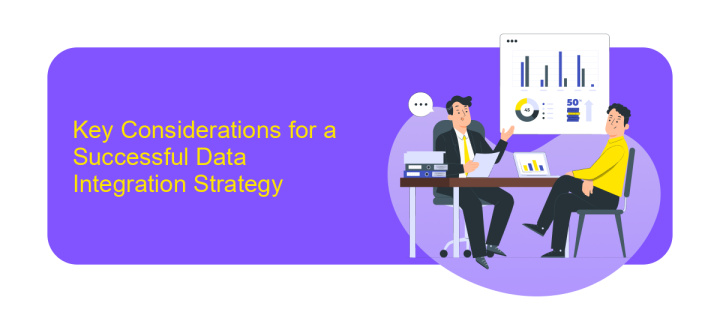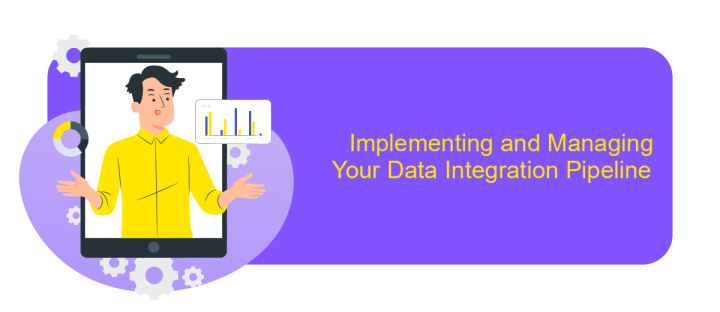Data Integration for Big Corporations
Data integration is a critical component for big corporations aiming to harness the full potential of their data assets. As businesses grow, they accumulate vast amounts of data from various sources, making seamless integration essential for informed decision-making and operational efficiency. This article explores the strategies and technologies that enable effective data integration, helping corporations to streamline processes, enhance analytics, and maintain a competitive edge in today's data-driven landscape.
Understanding the Challenges of Big Data Integration in Corporations
Integrating big data in large corporations presents a myriad of challenges that can hinder effective data utilization and decision-making. These challenges stem from the sheer volume, velocity, and variety of data generated, which require robust infrastructure and sophisticated tools for seamless integration. Corporations must navigate complex data ecosystems to ensure data consistency, quality, and accessibility across diverse platforms and departments.
- Data Silos: Isolated data systems prevent comprehensive analysis and insights.
- Data Quality: Inconsistent or inaccurate data can lead to faulty decisions.
- Security Concerns: Protecting sensitive data from breaches is paramount.
- Scalability: Systems must efficiently handle growing data volumes.
- Compliance: Adhering to regulatory standards across regions is crucial.
Addressing these challenges requires a strategic approach that includes deploying advanced data integration technologies, fostering a culture of data governance, and investing in employee training. By prioritizing these aspects, corporations can transform their data integration processes, ensuring that data-driven insights are accurate, timely, and actionable, ultimately driving business growth and innovation.
Key Considerations for a Successful Data Integration Strategy

Implementing a successful data integration strategy in big corporations requires careful planning and consideration of various factors. Firstly, understanding the specific data needs and objectives of the organization is crucial. This involves identifying which data sources are essential and how they can be effectively synchronized. Ensuring data quality and consistency across platforms is another key consideration, as discrepancies can lead to significant operational challenges. Utilizing tools like ApiX-Drive can streamline this process by automating data transfers and ensuring seamless integration between diverse systems.
Security and compliance are also vital components of a robust data integration strategy. Corporations must safeguard sensitive information and adhere to regulatory standards, which necessitates implementing advanced security protocols and regular audits. Additionally, scalability should be considered, as the integration solution must accommodate future growth and evolving data landscapes. Finally, fostering collaboration between IT teams and business units is essential to align technical capabilities with business goals, ensuring that the integration strategy supports overall corporate objectives and enhances operational efficiency.
Choosing the Right Data Integration Tools and Technologies

Selecting the appropriate data integration tools and technologies is crucial for big corporations aiming to streamline their data processes. The right choice can significantly enhance data accuracy, accessibility, and efficiency, leading to better decision-making and competitive advantage. When evaluating options, corporations must consider several key factors to ensure alignment with their business goals and IT infrastructure.
- Scalability: Choose tools that can handle large volumes of data and grow with your business needs.
- Compatibility: Ensure the tools integrate seamlessly with existing systems and support diverse data formats.
- Ease of Use: Opt for user-friendly interfaces that facilitate quick adoption and reduce training costs.
- Security: Prioritize solutions with robust security features to protect sensitive data.
- Cost-effectiveness: Evaluate the total cost of ownership, including licensing, implementation, and maintenance.
By carefully considering these factors, corporations can select data integration tools and technologies that not only meet their current needs but also adapt to future challenges. A strategic approach to tool selection will enable organizations to harness the full potential of their data assets, driving innovation and growth.
Implementing and Managing Your Data Integration Pipeline

Implementing a data integration pipeline requires a strategic approach to ensure seamless data flow across various systems. Start by assessing your organization's data needs and existing infrastructure. This evaluation will guide the selection of appropriate tools and technologies, ensuring compatibility and scalability. Designing a robust architecture is crucial, as it lays the foundation for efficient data processing and transformation.
Once the architecture is in place, focus on developing a comprehensive plan for data extraction, transformation, and loading (ETL). This involves defining data sources, setting up data connectors, and establishing data transformation rules to maintain data integrity and quality. Regular monitoring and optimization of the pipeline are essential to accommodate evolving business requirements and data volumes.
- Identify and prioritize key data sources.
- Select suitable data integration tools and platforms.
- Design and implement ETL processes.
- Establish data governance and compliance protocols.
- Continuously monitor and optimize the pipeline.
Managing your data integration pipeline involves ongoing maintenance and troubleshooting to address any issues that arise. Implement automated alerts and reporting mechanisms to quickly identify and resolve bottlenecks. By fostering collaboration between IT and business teams, you can ensure that the data integration pipeline aligns with organizational goals and drives informed decision-making.
- Automate the work of an online store or landing
- Empower through integration
- Don't spend money on programmers and integrators
- Save time by automating routine tasks
Real-World Examples and Best Practices
In the realm of big corporations, data integration is pivotal for streamlining operations and enhancing decision-making. A notable example is how global retail giants utilize data integration to merge sales data from various regions, enabling real-time inventory management and personalized marketing strategies. By integrating data from multiple sources, these corporations can predict trends and optimize supply chains, thus reducing costs and improving customer satisfaction. Another example is in the healthcare industry, where data integration allows for the seamless sharing of patient information across different departments, ensuring accurate diagnoses and effective treatment plans.
To achieve successful data integration, corporations often adopt best practices such as establishing a centralized data repository, ensuring data quality, and implementing robust security measures. Utilizing tools like ApiX-Drive can significantly streamline the integration process by automating data transfer between applications without the need for extensive coding. This not only saves time but also reduces the risk of human error, allowing corporations to focus on strategic initiatives. Additionally, continuous monitoring and regular updates to the integration framework are essential to adapt to evolving business needs and technological advancements.
FAQ
What is data integration and why is it important for big corporations?
How can big corporations ensure successful data integration?
What are the common challenges faced during data integration?
How does data integration support business intelligence and analytics?
What tools or services can assist in automating data integration processes?
Apix-Drive is a simple and efficient system connector that will help you automate routine tasks and optimize business processes. You can save time and money, direct these resources to more important purposes. Test ApiX-Drive and make sure that this tool will relieve your employees and after 5 minutes of settings your business will start working faster.


